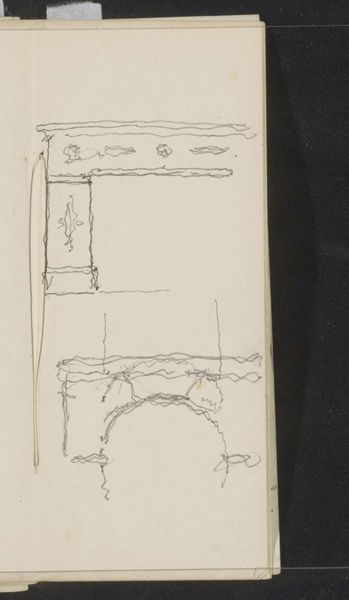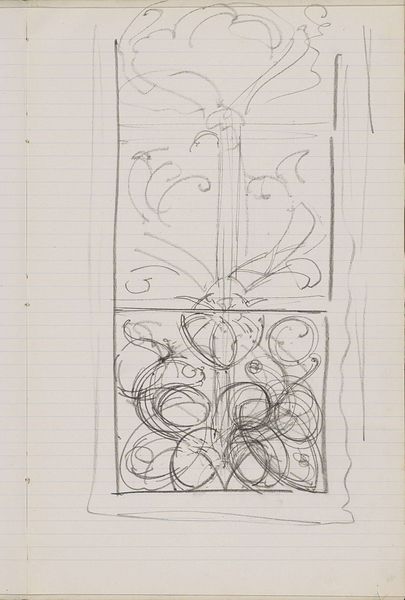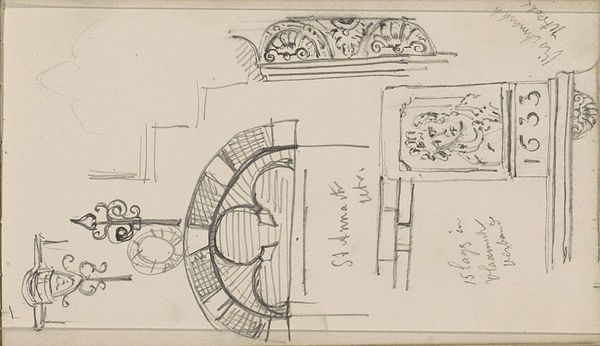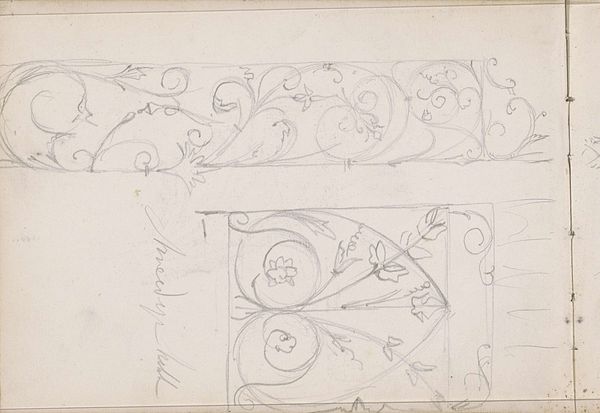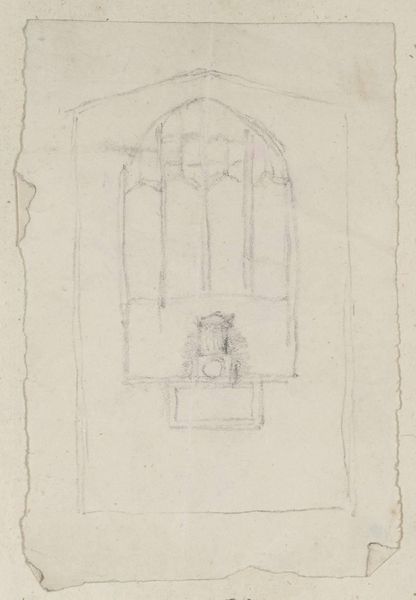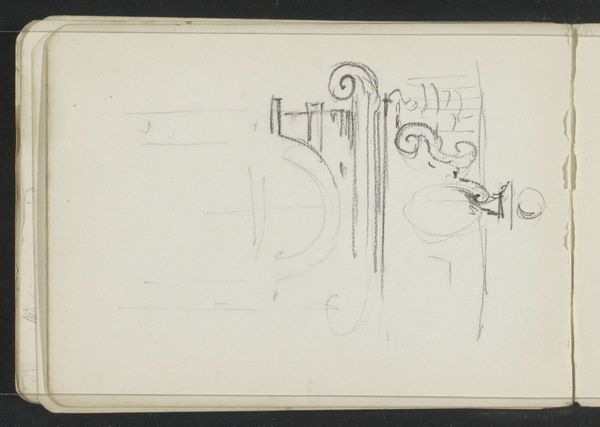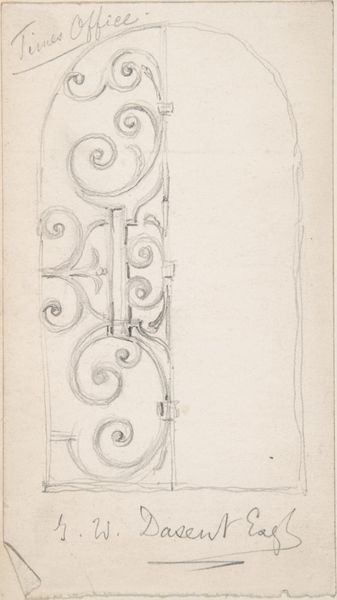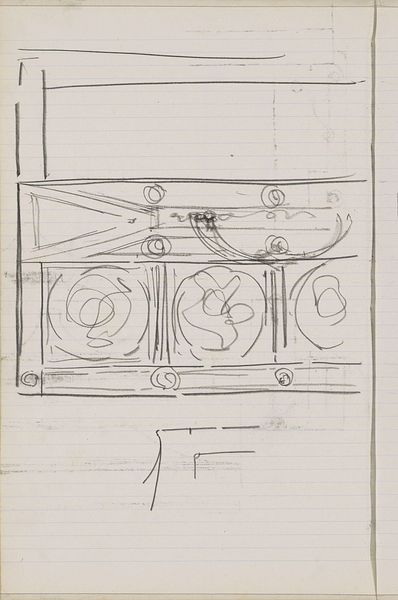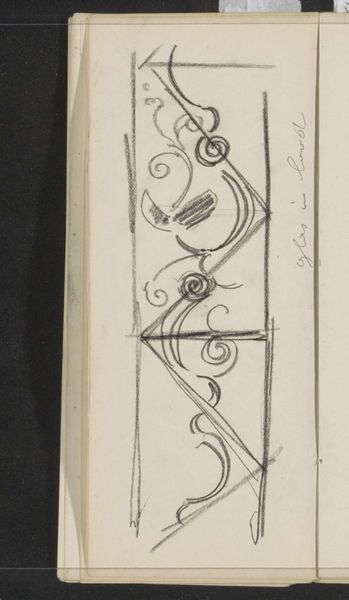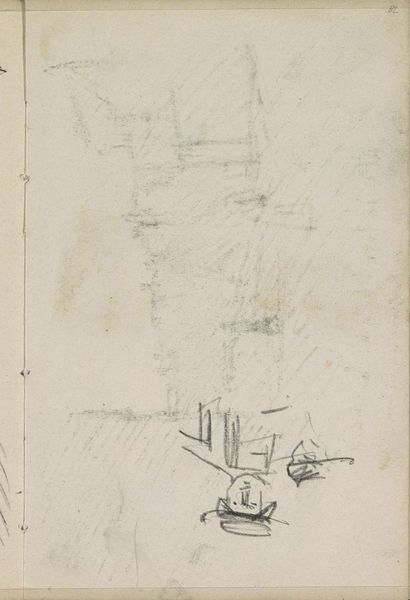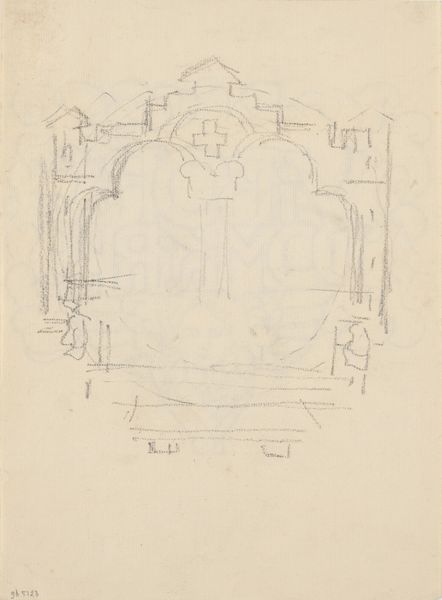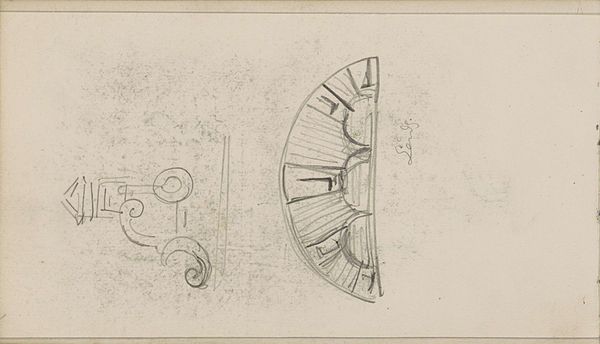
drawing, paper, pencil
#
drawing
#
ink drawing
#
pen sketch
#
arts-&-crafts-movement
#
paper
#
geometric
#
sketch
#
pencil
Dimensions: height 165 mm, width 102 mm
Copyright: Rijks Museum: Open Domain
Editor: Here we have Gerrit Willem Dijsselhof's "Mantelklok," dating somewhere between 1876 and 1924. It’s a sketch done in pencil and ink on paper. What immediately strikes me is the tentative, almost ghostly quality of the lines. What can you tell us about this piece? Curator: It's an intriguing preliminary study, certainly. Notice the artist's use of line to delineate form. The clock’s design emerges primarily through outlines and interior details and decorative geometric patterns that lack tonal variation. Consider the dominance of circular motifs, both the clock face and smaller internal circular shapes in the design at the base. Editor: It feels incomplete but captivating, almost like a diagram of a dream. Is that characteristic of the Arts and Crafts Movement? Curator: To some degree. While the Arts and Crafts Movement valued fine craftsmanship and ornamentation, drawings are part of that process. You must also consider the geometric shapes, especially the diamond shapes used throughout. This geometric composition, lacking depth or a play of light and shadow, flattens the image. This emphasizes surface patterns. Is there a rhythm created through that emphasis? Editor: I think so. The repetition almost creates a pulse, like the ticking of a clock, even in a static image. Curator: Precisely. It’s an exploration of form and the balance of line and shape, a prelude to a finished, functional object where utility meets decorative expression. Editor: So, even in its unfinished state, the piece provides insight into the core aesthetic concerns of its time. Curator: Yes, the artist’s design intention is evident through his selective emphasis on geometry, line, and form. That can teach us as much as a finalized piece of art.
Comments
No comments
Be the first to comment and join the conversation on the ultimate creative platform.
